
We used surveys as a way to gauge our participant’s age, knowledge about screen readers and NASA’s Eclipse Soundscape Project. Then we conducted user testing on the current layout to collect user’s pain points. There was a total of 6 interviews where we watched users navigate, narrate through their navigation. The completion of these tasks were used as metrics to illustrate how effective the current layout was at conveying information.
Users were expected to perform the following tasks throughout the interview:

Based on our user testing, these are some of the metrics and demographic we collected...

Overall, users showed confusion and frustration when navigating the site. Notable comments include:

From the data we obtained from our user testing, we identified the strengths and weaknesses of the Eclipse Soundscape layout to help us narrow down what to focus on when designing.



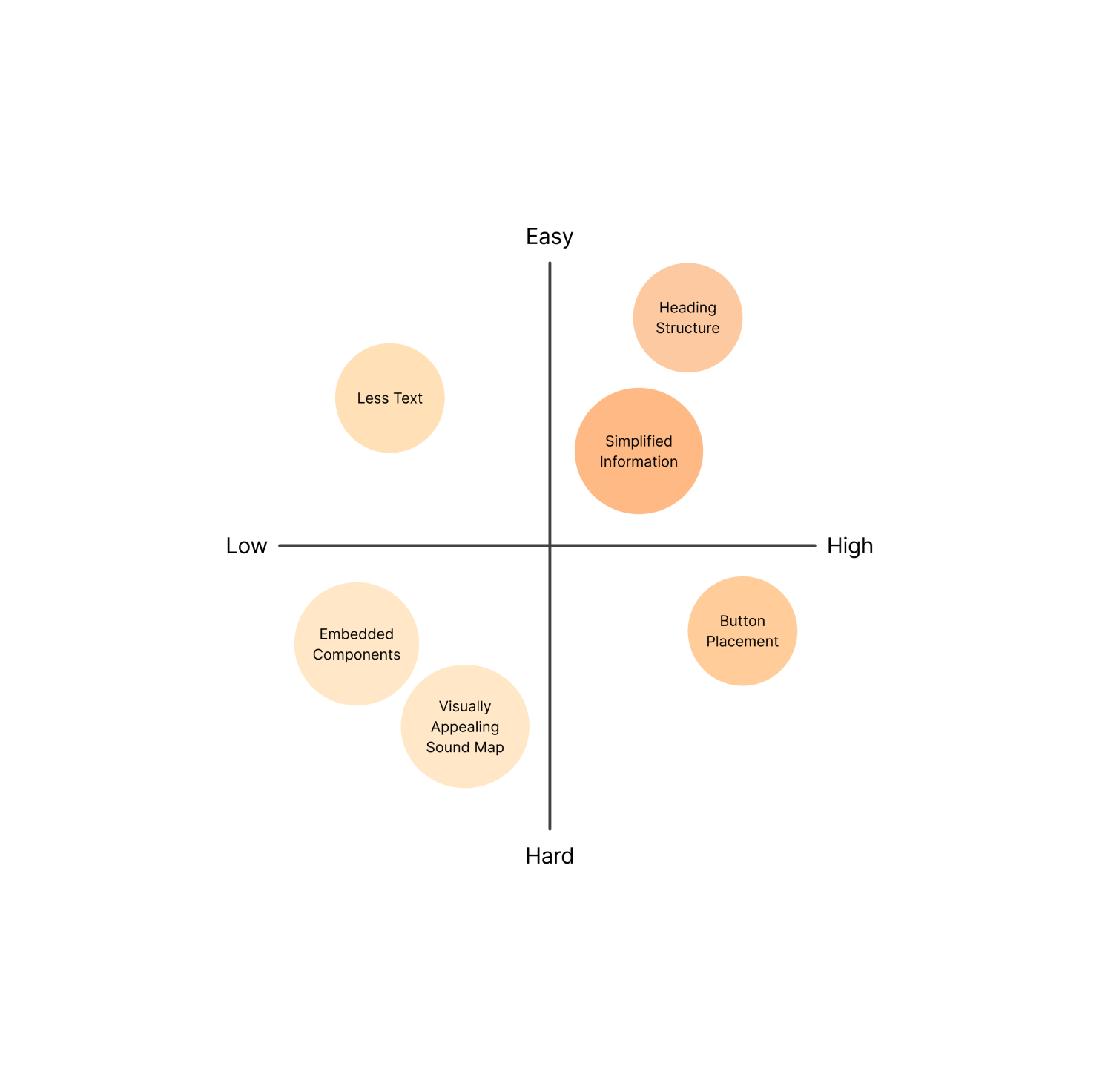
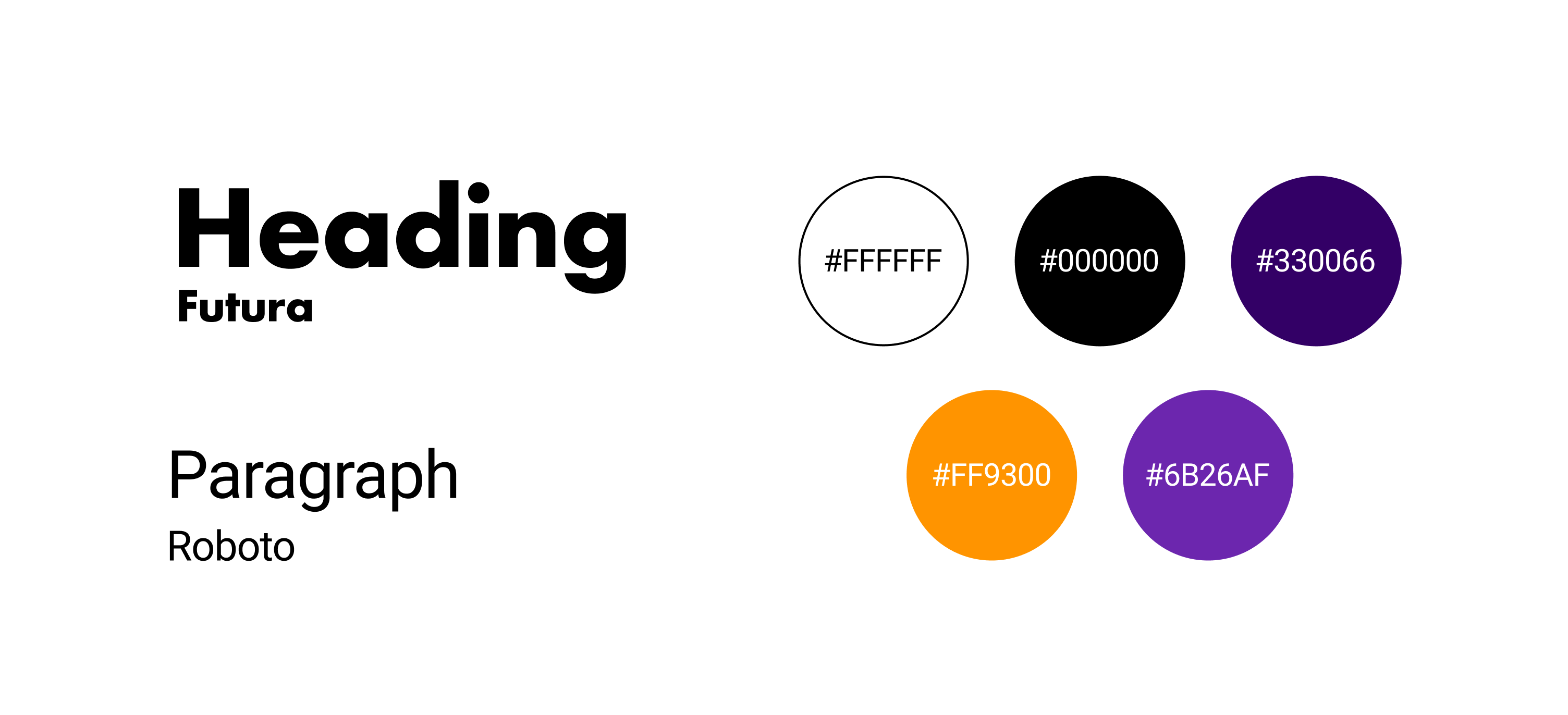

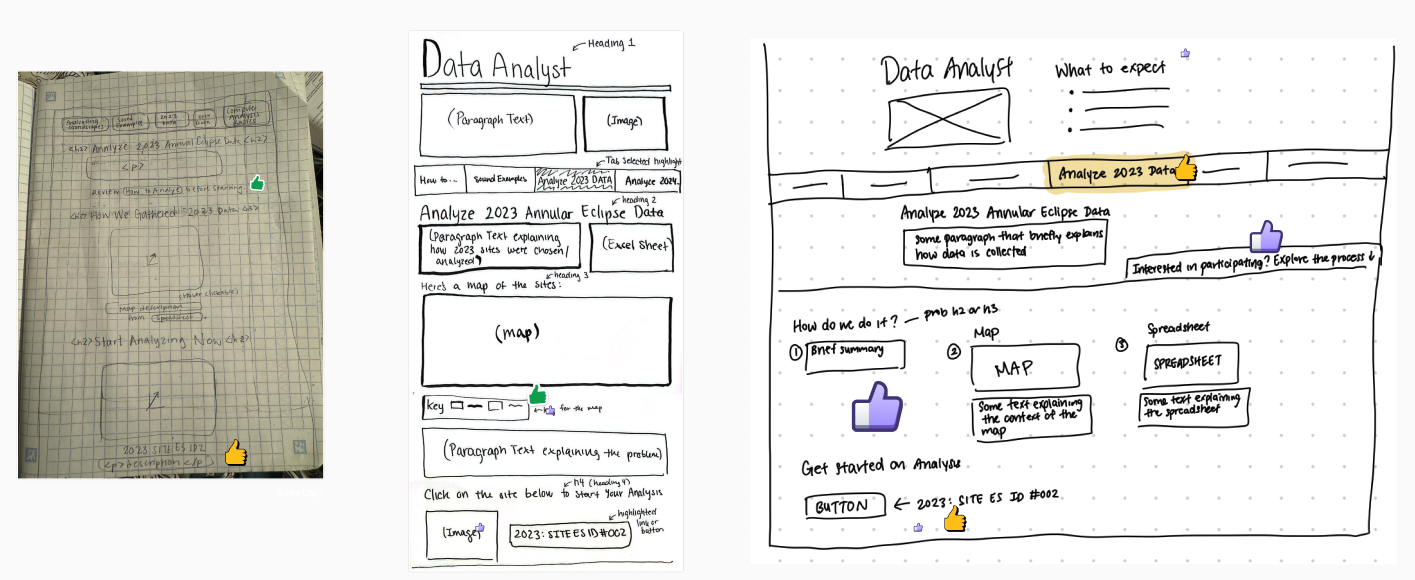
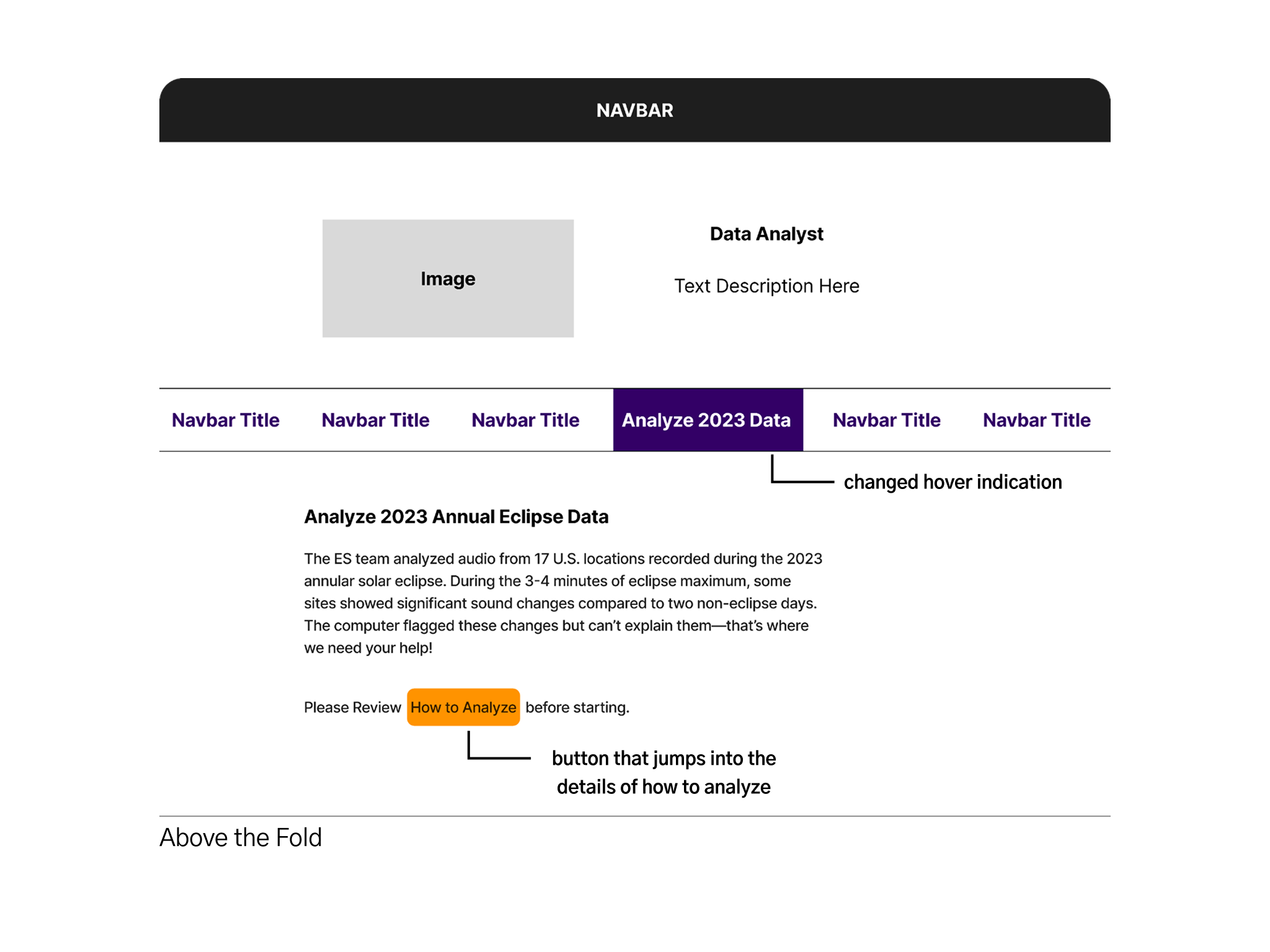
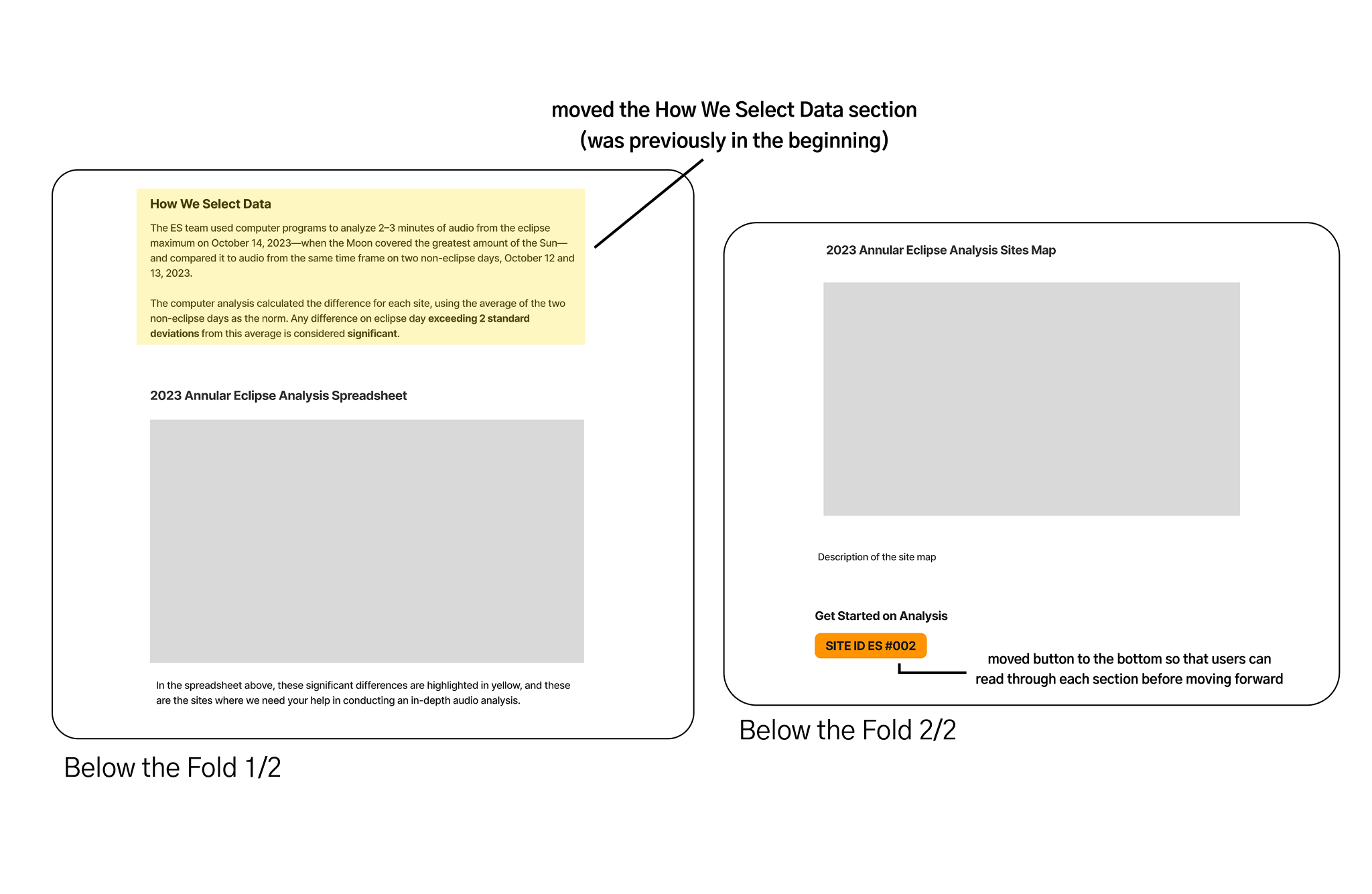
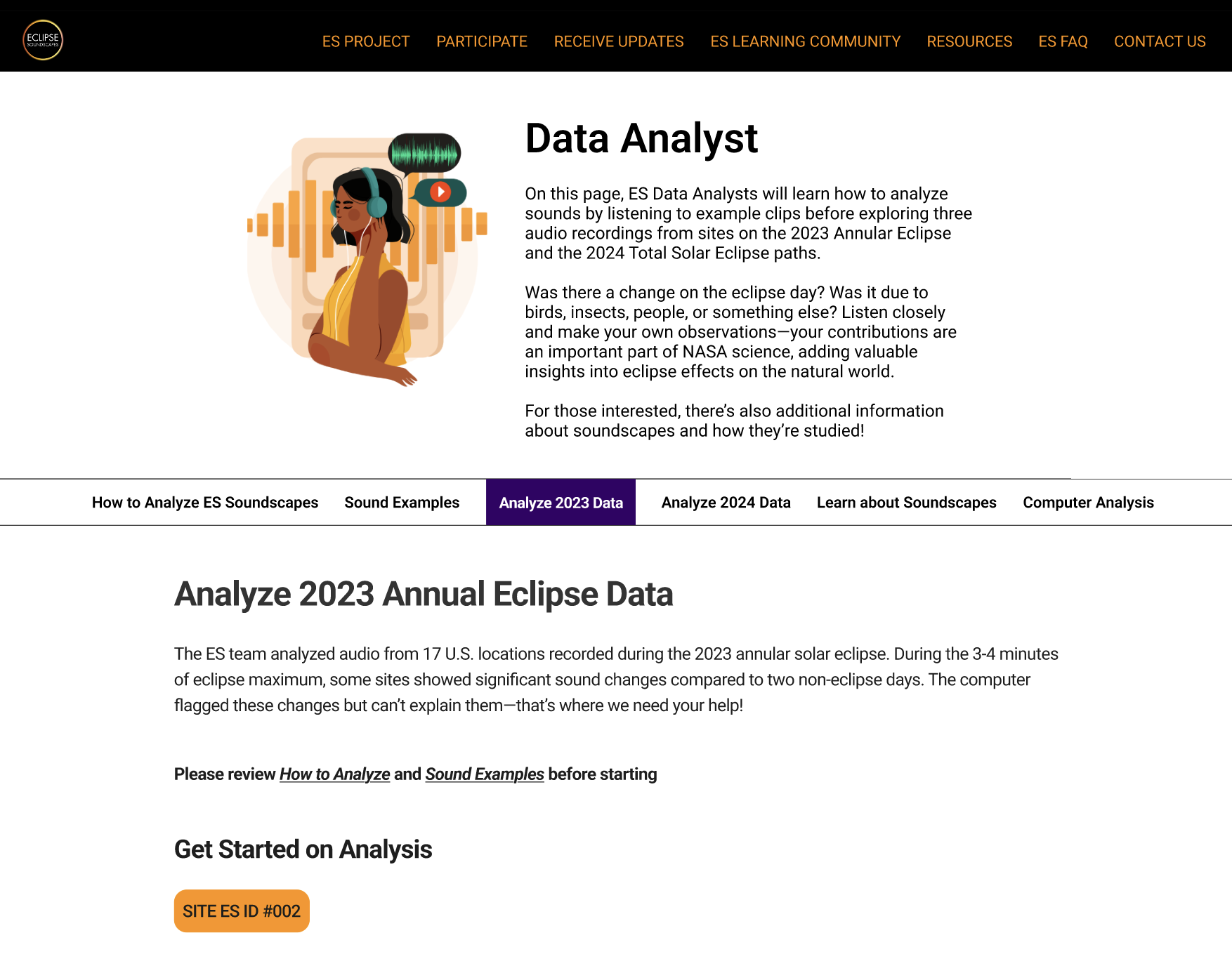
Users are less willing to read about something if they’re bombarded with a bunch of information in their face. Adding space in between paragraphs can give the illusion of more space.
Adding such features like a back button on the left hand side or a button with a hover indication helps users understand what these elements do.
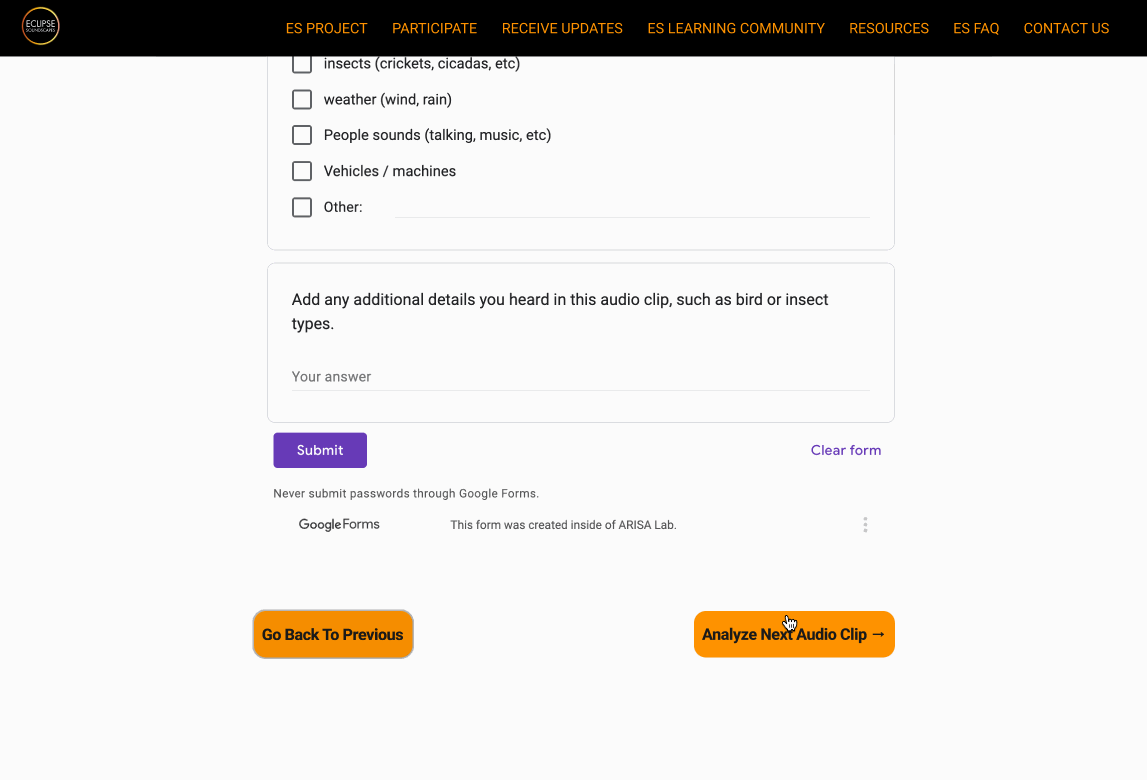

Users don’t have to worry about the different components in their face when performing an analysis. This also ensures users can focus on the current analysis they’re doing - without skipping around.
Shoutout to my team members for giving in the best effort for each step of the project. Because of this we were able to deliver most of our planned features, especially the audio analysis section.
My team and I had to reconsider some ambitious ideas because our client’s site was built on WordPress. We needed to make sure the ideas we deliver are covered within the client’s budget and WordPress features.
Initially, we wanted to focus primarily on making an interface screen reader friendly. However, we realized it was hard to find a group of individuals who used screen readers like VoiceOver in their daily life. But it would’ve been great to have insight about what they prioritize in interface for a seamless user experience.